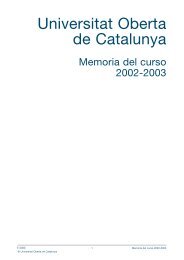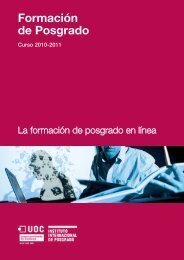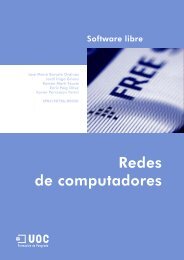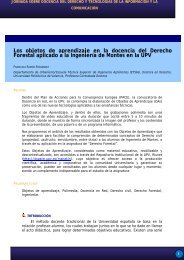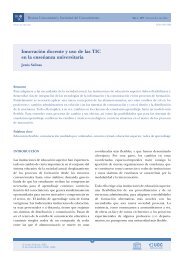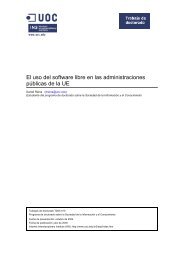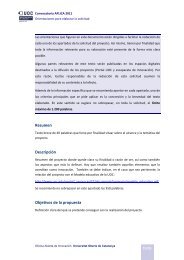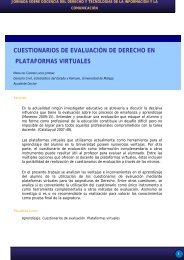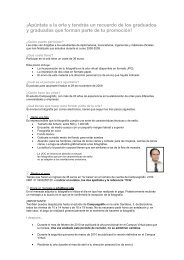e-governance and citizen information - Universitat Oberta de ...
e-governance and citizen information - Universitat Oberta de ...
e-governance and citizen information - Universitat Oberta de ...
You also want an ePaper? Increase the reach of your titles
YUMPU automatically turns print PDFs into web optimized ePapers that Google loves.
E-<strong>governance</strong> <strong>and</strong> Citizen Information 88 Structure <strong>and</strong> Organisationremaining <strong>de</strong>partments only offered <strong>information</strong> relating specifically to those <strong>de</strong>partments'own area of responsibility. This has clear costs in terms of economic <strong>and</strong> human resources.The compartmentalisation of the Administration in this case is not only explicit in the duplicationof the organisational division across the territory (above all in the various major cities),but also, as has been observed, when there are attempts at unification, the <strong>de</strong>partments arereluctant even to share the <strong>information</strong> about <strong>citizen</strong>s they have at their disposal (P14).There is, nevertheless, a plan for future implementation that would break the logic that hasdominated until now. Thus, for the integration of this communication channel, “what is wantedis to bring together the Generalitat's existing offices <strong>and</strong> convert them into general officesor ones that at least offer this general <strong>information</strong> as well” (P75). The <strong>de</strong>partments still carrya lot of weight in this, since, as the same interviewee commented, “it still remains to be seenwhat the <strong>de</strong>partments will have to say about it” (P75).b) The Internet ChannelWith regard to the Internet, at the beginning of 2004 there were a total of 267 websites linkeddirectly to the Generalitat of Catalonia. The websites, moreover, showed a high level of heterogeneitywith respect to their <strong>de</strong>sign, presentation, contents <strong>and</strong> level of <strong>de</strong>velopment.The use indices of the large majority of the websites were low, a fact that highlights problemslike the high dispersal of <strong>information</strong> <strong>and</strong> resources used (creation <strong>and</strong> maintenance ofthese websites). Despite having ma<strong>de</strong> an effort at homogenisation with the approval of astylebook for all the units <strong>and</strong> the structuring of part of the contents using a so-called “vitalstatistics” organisation, in many cases these directives were not followed. Because therewere actions that had not been “agreed with the <strong>de</strong>partments, they did not feel involved”(P27).Therefore the Generalitat's Internet presence was structured along the lines of bureaucraticcompartmentalisation. In other words, by associating the majority of the contents with thevarious existing administrative units, without homogeneity “either at the <strong>de</strong>sign or the technicallevel” (P15).The plan to re<strong>de</strong>sign <strong>and</strong> revamp the portal sought to overcome this situation with a thematicorganisation of all the <strong>information</strong> available <strong>and</strong> a new style gui<strong>de</strong>. At the same timeit pointed to the possibility of closing some of the websites according to rationalisation(economic, <strong>information</strong>, etc.) criteria. Finally, a new portal was launched with a new wayof organising <strong>information</strong> <strong>and</strong> which, moreover, adopted a single domain name for all thehttp://www.uoc.edu/in3/pic




